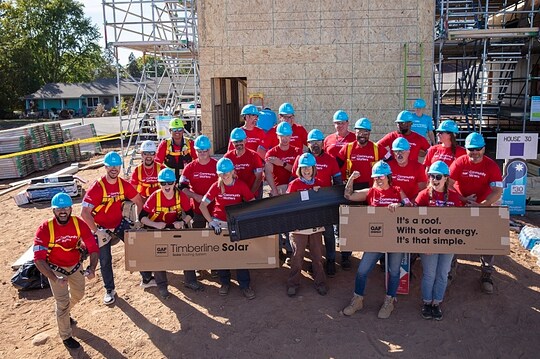
Tout projet de toiture doit tenir compte d'un certain nombre de facteurs pour choisir la conception adéquate : profil de durabilité, risques potentiels, performances globales, et plus encore. Notre équipe des sciences de la construction et toiture (BRS) est spécialisée dans la collaboration avec les professionnels de l'industrie afin de les aider à améliorer la conception de leurs toitures dans tous ces domaines. En s'appuyant sur son expertise en matière d'enveloppe de bâtiment, notre équipe BRS agit en tant que leader d'opinion et collaborateur, aidant les professionnels de la conception à fournir de meilleures solutions à leurs clients.
"We're a consultant's consultant. Basically, we're a sounding board for them," explains Jennifer Keegan, Director of Building and Roofing Science. Rather than solely providing product specifications and tactical support, the BRS team partners with consultants, specifiers, and architects to provide guidance on designing high-performing roofs that don't just meet code, but evolve their practices and thinking. For example, this might include understanding the science behind properly placed air and vapor retarders.
As experts in the field, our BRS team members frequently attend conferences to share their expertise and findings. As Jennifer explains, "Our biggest goal is to help designers make an informed decision." Those decisions might be in a number of areas, including the building science behind roof attachment options, proper placement of air and vapor retarders, and how a roof can contribute to energy efficiency goals.
Expanding the BRS Team
Our BRS team is accessible nationwide to look at the overall science of roof assembly and all of the components and best practices that make up a high-performance, low-risk, and energy-efficient roof. Our regional experts are positioned strategically to better serve our customers and the industry as a whole. We have the capacity to work with partners across the country on a more personalized level, providing guidance on roof assembly, membrane type, attachment method, or complicated roof details including consideration of the roof to wall interface.
Partnering with the Design Services Team
In addition to our newly expanded BRS team, GAF also offers support through its Design Services team. This group helps with traditional applications, installations, and system approvals. GAF's Design Services team is a great resource to answer any product questions, help you ensure your project meets applicable code requirements, assess compatibility of products, outline specifications, and assist with wind calculations. By serving as the front line in partnership with our BRS team, the Design Services team can help guide the design community through any phase of a project.
GAF's Building and Roofing Science team is the next step for some of those trickier building projects, and can take into consideration air, vapor, and thermal requirements that a designer might be considering for their roof assembly. Through a collaborative process, our BRS team seeks to inspire project teams, as Jennifer explains, "to do it the best way possible."
Engaging with the Teams
GAF has the support you need for any of your design and roofing science needs. To request support from the GAF Design Services team, you can email designservices@gaf.com. For additional support from our Building and Roofing Science team regarding specialty installations or how a building can be supported by enhanced roof design, contact us at buildingscience@gaf.com.
Our Building and Roofing Science team is always happy to support you as you work through complex jobs. You can also sign up to join their office hours here.



